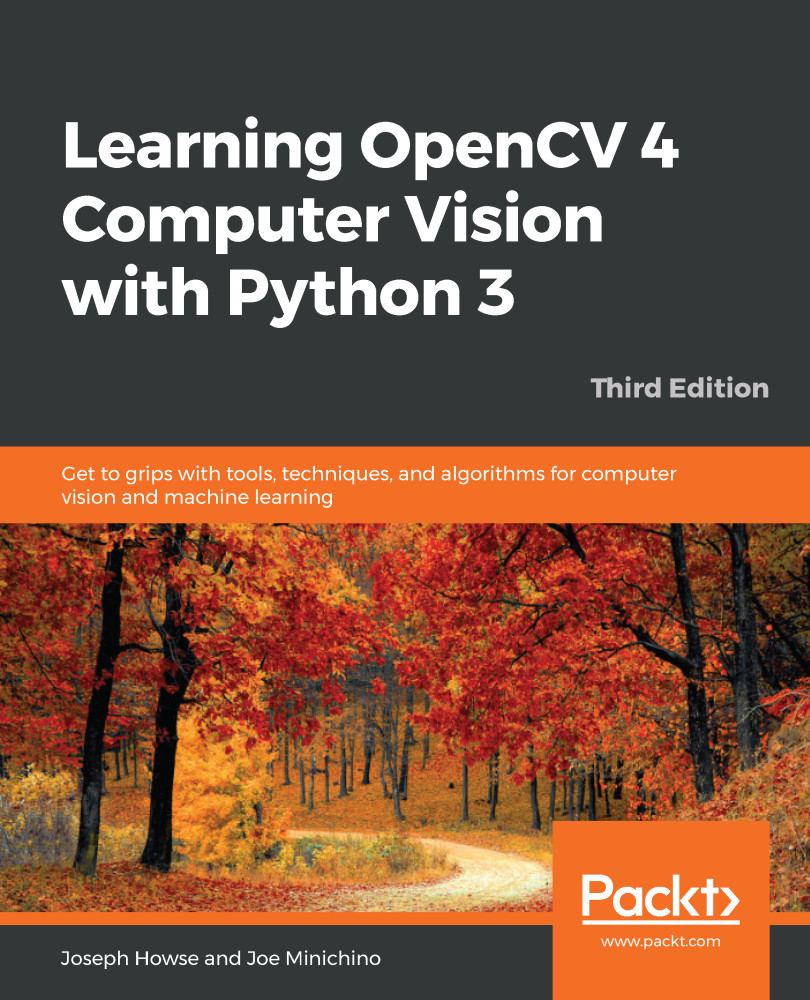If you like geometry, photography, or 3D graphics, then this chapter's topics should especially appeal to you. We will learn about the relationship between 3D space and a 2D projection. We will model this relationship in terms of the basic optical parameters of a camera and lens. Finally, we will apply the same relationship to the task of drawing 3D shapes in an accurate perspective projection. Throughout all of this, we will integrate our previous knowledge of image matching and object tracking in order to track 3D motion of a real-world object whose 2D projection is captured by a camera in real time.
On a practical level, we will build an augmented reality application that uses information about a camera, an object, and motion in order to superimpose 3D graphics on top of a tracked object in real time. To achieve this, we will conquer...


